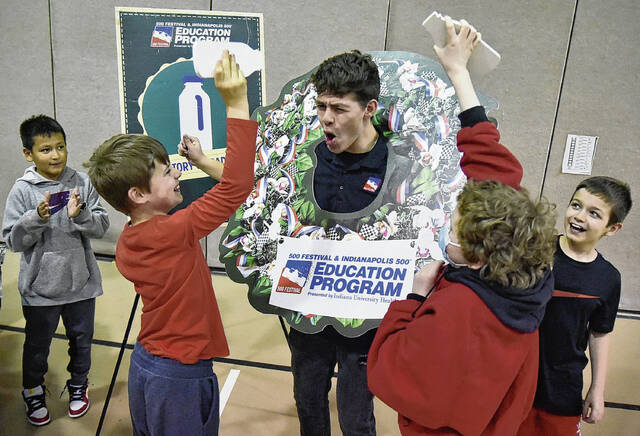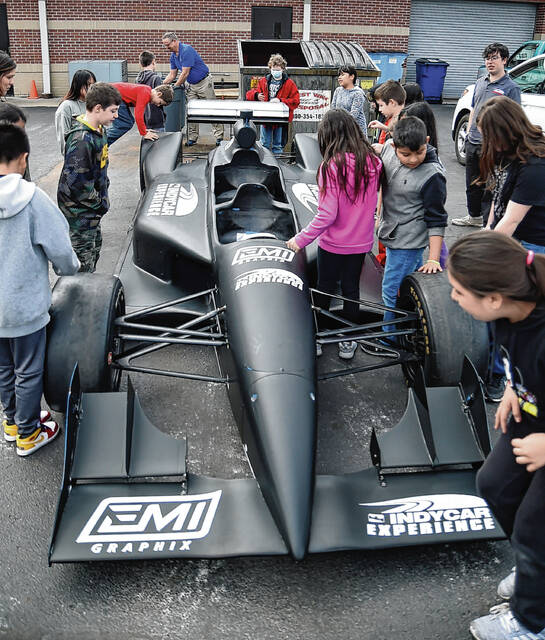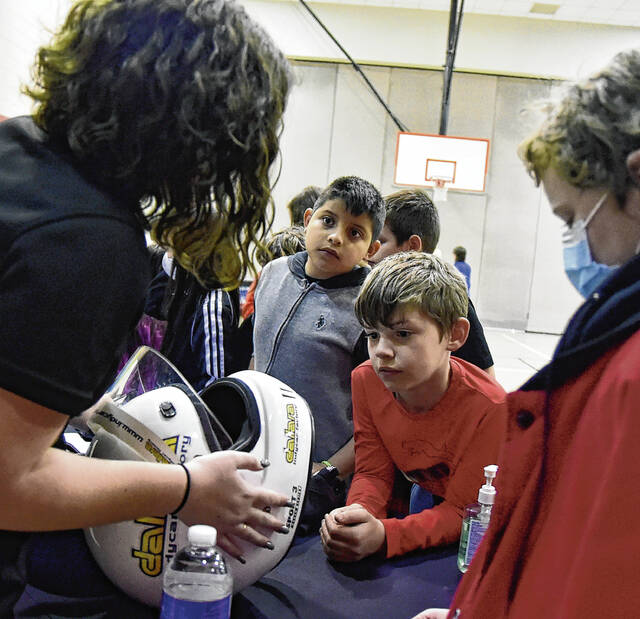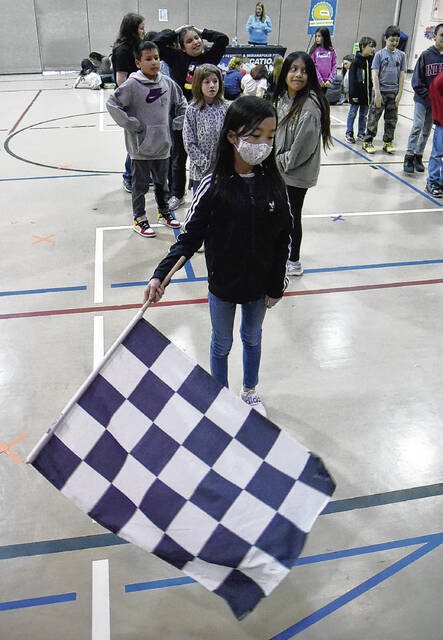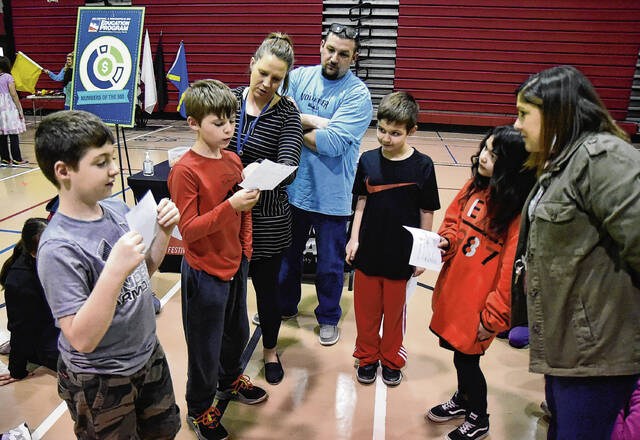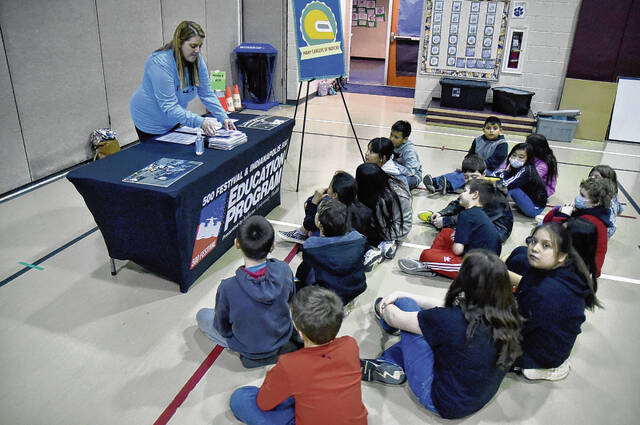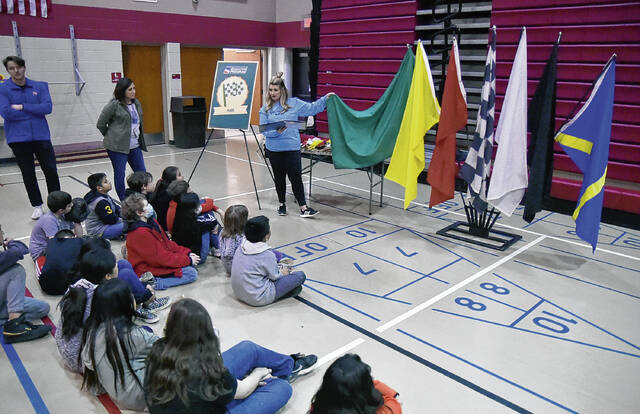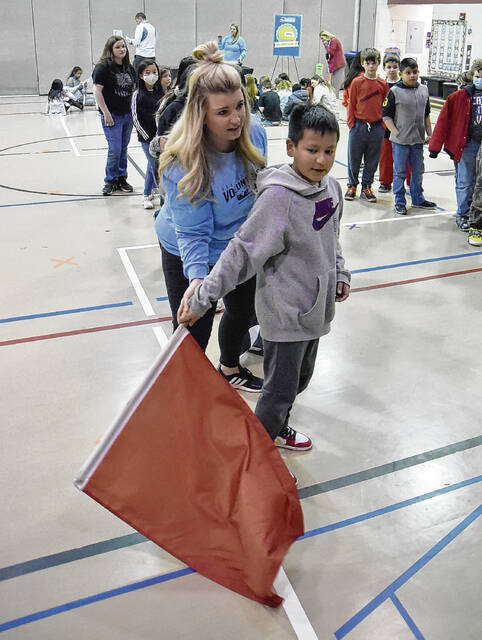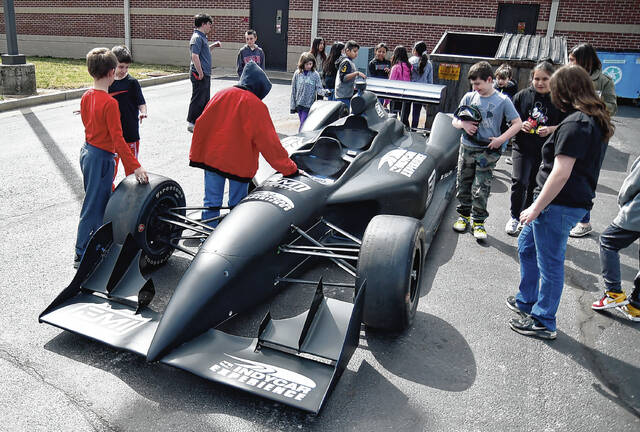If he could choose any career at the Indianapolis Motor Speedway, Devin Smallwood said he would be on an IndyCar pit crew.
In a matter of seconds, they change tires, refuel, check and repair parts and adjust aerodynamics to get the driver back on course.
“You could try to break the world record,” he said. “You’d be in the ‘Guinness World Records.’”
An average pit stop takes about 2.4 seconds, and the world record is currently 1.82 seconds, held by the Aston Martin Red Bull Racing pit crew, according to caranddriver.com.
“If you were able to change those tires in under 2 seconds, I’d be pretty impressed,” Camila Victoriano told her classmate.
While Devin and Camila are only fourth-graders — still several years away from being able to drive or work — it’s fun to dream.
They recently had a chance to learn about the various careers offered at the famed speedway in the state’s capital city when the 500 Festival and Indianapolis 500 Education Program conducted a mobile study trip at Seymour-Jackson Elementary School.
On Tuesday, representatives set up stations inside the gymnasiums at Cortland and Jackson elementary schools and also stationed an IndyCar outside each school.
Presented by Indiana University Health, the mobile study trips immerse Indiana fourth-graders in the world of the 500 Festival and Indianapolis 500, exploring their important place in Indiana’s history and culture. The education program is a combination of classroom work with an Indiana Academic Standards-based curriculum and a study trip that brings classroom material to life.
To provide the maximum number of students with an opportunity to engage with this storied piece of Indiana history, the 500 Festival is offering mobile study trips to an exclusive group of schools. The program is offered to schools free of charge, and the 500 Festival provides all resources, including the IndyCar.
Jackson fourth grade teachers Emily Pardieck and Heather Lewis said they entered a lottery online. Some schools were chosen for the mobile study trips, and others were selected to visit the speedway.
The Jackson fourth-graders are only allowed one out-of-county field trip in a school year, and that was done in September to the Indiana State Museum and IMAX Theatre.
“When the opportunity came where they would come to us, it worked out perfectly,” Lewis said of the mobile study trip.
On Tuesday, five stations were set up inside the gymnasium.
At one, they learned about the many careers of IndyCar, from drivers to team owners to physical therapists. Students were given a card to choose three careers that would best suit them.
Another station was all about Indianapolis Motor Speedway history and traditions. Kids learned the first race there actually involved hot air balloons in June 1909, followed by motorcycles in August of that year and the first Indianapolis 500 in May 1911. It took 3 million paving bricks to create the track in 1909.
That ties into one of the traditions for the race winner — kissing the bricks. Other winning traditions include having a large wreath placed around them, pouring a bottle of white milk on them and drinking it and climbing the fence.
A third station allowed students to learn about driver equipment, including helmet, shoes, gloves and racing suit, to keep them protected from head to toe.
The seven race flags were the focus of another station. Kids learned what each one means: Green, yellow, red, white, black, blue with a yellow stripe and black-and-white checkered.
The final indoor station involved numbers of the 500. Students were divided into racing teams and had to pick the number of their IndyCar and a sponsor and then were given cards to manage the money it would take to run the team.
Outside, IndyCar Experience had a car on display for students to look at and ask questions.
Smallwood said he liked the car station the most and thought it was interesting that the IndyCars race around 230 mph.
Victoriano, on the other hand, liked learning about the careers.
“I liked the science, like aerodynamics, but I also liked the creativity part,” she said. “I didn’t do that well in the technology. … I don’t know that much about it.”
Fellow-fourth graders Lincoln Vest and Amyel Hernandez had the same favorite station as Smallwood.
“It was really cool how you got to see all of the parts about it. That was my first time seeing one in real life, and then also, I didn’t even know there were certain parts they use. They are really cool,” Vest said.
“I love the engineering,” Hernandez said. “It just shows how much they do, how they make them. I really liked it.”
Fourth-grader Bella Campbell said she enjoyed learning about the flags and getting to wave one of them.
“I learned what they are used for, like with the red one, I thought that was just stop, but it’s danger, there’s something happening on (the track). I didn’t know that,” she said.
Pardieck and Lewis said the mobile study trip was beneficial because lessons related to the Indianapolis 500 and speedway will continue in May ahead of the race on May 29.
“I think it will help relate things that we do later in the spring to the lessons. Our lessons kind of spin off of what their stations were,” Pardieck said, noting the budgeting game and flags are done in class, too.
“It’s definitely a good introduction,” Lewis said. “The kids don’t know what (the Indianapolis 500) is, so this is their introduction before the real stuff.”
The mobile study trip was a good hands-on approach, Pardieck added.
“Fourth grade is all about Indiana history, so it fits right in with what we’re learning,” she said.
On the Web
For information about the 500 Festival and Indianapolis 500 Education Program, visit 500festival.com/youth/education-program/overview.

